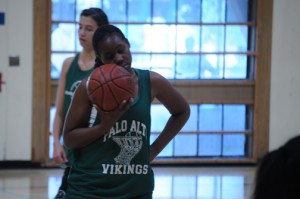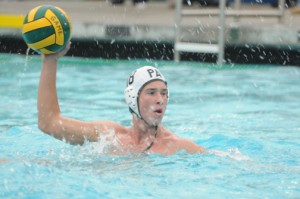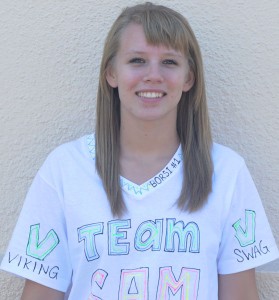In 90 minutes, you could play two water polo games, burn 1000 calories running, or do 26 different types of yoga positions. Or you could sit through a class at Palo Alto High School.
After much discussion, the recently enforced block schedule this year has replaced last years schedule at Paly, changing the start and end time of school, class lengths and the overall feel of classes, most of which last 90 minutes. This schedule change affects students, teachers and administrators, but how is it affecting athletes?
One of the block schedule’s main features is the later start time, theoretically allowing students to get 25 more minutes of sleep every morning. Many athletes nation-wide are sleep deprived, especially due to demanding practice schedules. According to Health Behavior News Service, only about eight percent of high school students get enough sleep. For an average night of sleep, it is recommended that teens get eight to nine hours of sleep.
“Are [athletes] getting more sleep?” Paly athletic director Earl Hansen questioned. “I really doubt it. I don’t believe that the early start is going to help teenagers any more than in the past. They go to bed at the same time, too late probably, not because of homework but because of texting.”
While some argue that the start time of the schedule does not affect athletes, others disagree. Last year, The Viking discovered that about 44% of students at Paly are also athletes (Volume III, Issue 3, page 52). Athletes generally need all the sleep they can get. Sleep deprived athletes often perform more poorly than athletes who get the recommended amount of sleep on a regular basis.
“I like the later start because I don’t have to wake up as early,” varsity tennis player Amy Ke (’12) said. “I feel like I get a lot more sleep compared to last year.”
While many athletes are thankful for the extra time to sleep in in the mornings, some argue that the actual time you wake up or go to bed may not matter as much as how many hours of sleep you get.
“They’ve done tons of sleep studies on how to get [athletes] to be at their absolute best when they need to be,” Hansen said. “Sleep is very important. It has nothing to do with the time you wake up, it has to do with regular hours of sleep you get. You can get up at four in the morning everyday as long as you get your seven or eight hours.”
St. Francis High School, which has almost an identical schedule to Paly, demonstrates that the block schedule can be beneficial in helping students learn to balance sleep and academics. Widely known for its strong athletics program, St. Francis refuses to comprise its academic prestige. Its students must learn to prioritize their athletic responsibilities with academics in order to obtain a GPA high enough to participate in school sports.
“From an athletic standpoint, [the block schedule] is great because students get into a good routine of doing their homework after school,” St. Francis Athletic Director Michael Pilawski said. “It better prepares them for college.”
Pilawski has worked at St. Francis for fourteen years, with a block schedule for the majority of his career. While St. Francis students have adapted to this schedule over time, it is still fresh to Paly athletes. One concern is the question of the length of class times. Athletes who have a hard time focusing for long periods of time may dislike the block schedule.
“Educationally, you’re going to look at [the fact that] you have a lot of ‘A’ student [athletes],” Hansen said. “We have plenty of ‘A’ students in Palo Alto, and you can give them any schedule you want. They’re still going to be ‘A’ students.”

Although Paly rises above many schools academically, the balance between academics and athletics is challenging. A 90 minute block period could go by quickly for athletes if they are interested in the class subject; otherwise, it can be very hard to focus on a subject.
“What [the block schedule] affects is some of the kids on the other end of the spectrum,” Hansen said. “They have to sit for 90 minutes in a class. If they don’t like that class or they miss a class where they feel like they’re getting behind, it makes them feel like they can’t catch up. I don’t like that part.”
An athlete’s ability to focus definitely plays a roll in the new schedule this year.
“I find it hard to sit in class for an hour and a half and focus,” basketball player Emilee Osagiede (’12) said. “I really can’t focus at my after school practice either. I just want to go crazy because I’ve been sitting in a classroom all day, but then my coach will be like ‘focus!'”
For some, adapting to the schedule isn’t a matter of how long it has been in place. Students at St. Francis who have had the schedule their entire high school careers find it hard to focus during the block periods as well.
“Classes are really long and sometimes super boring and days seem like forever,” St. Francis three-sport athlete Jenna Thompson (’12) said. “If I could, I would make the classes a little shorter.”
Thompson participates in tennis, basketball and track throughout the year at St. Francis and has practice after school anywhere from one to three hours. Despite the strenuous classes, Thompson generally enjoys the block schedule as an athlete.
“Having that block schedule gives us less homework and lets us go to bed earlier, get more rest, do better in school and do better in practices and games,” Thompson said.
Like many athletes, Thompson feels the pressure of balancing school with demanding practice schedules. The unique schedules at both Paly and St. Francis offer a wide variety of options for athletes, mirroring a college schedule with many opportunities for athletic freedom.
“The block schedule helps a lot just because of the fact that we have a lot less homework,” Thompson said. “It gives us more time to do other things since our sports are completely time consuming and take up our lives.”
Another similar change in this year’s schedule is the dismissal time, which is later than last year’s. The usual dismissal time of 3:25 pushes back sports practices and games to later in the day.
“On Mondays and Wednesdays we get home [from football practice] to eat dinner around eight,” Hansen said regarding football. “I don’t particularly care for it.”
The later practice times regarding gym space and court time affect this year’s schedule, because the schedule ends at different times depending on the day of the week. For example, on Mondays, Wednesdays and Fridays, school gets out at 3:25 p.m., Tuesdays at 2:25 p.m. and on Thursdays, school is dismissed at 2:55 p.m.
“It’s inconsistent, because we always have practices at different times,” Ke said. “It’s a little inconvenient.”
Regardless of its inconsistency in dismissal times, the schedule allows for having fewer classes per day. Many students have had a positive response to the fewer classes, as having three or four classes per day makes homework loads lighter and easier to manage.
“[Getting out later] really isn’t a problem,” varsity water polo player Aaron Zelinger (’12) said. “I prefer it to last year actually, because it’s easier to focus all my attention on three subjects, rather than have to worry about all [seven of] my classes while I’m working out.”

One last change for the schedule this year incorporates a mandatory window of time for students to have more individual help with teachers. Called tutorial, this period is open for students at the end of the day once a week on Thursdays. It lasts for about an hour. Tutorial has the possibility of acting as a prep for athletes, who could use the time to go to the gym to lift weights, or even leave early for games without missing a class set.
“This year’s schedule has made it easier to make up school work missed because of sports games,” Zelinger (’12) said. “For example, we have a lot of Thursday games. Luckily I miss tutorial instead of an actual class for games.”
While some athletes appreciate this new addition to the schedule this year, others think that tutorial is unnecessary.
“Tutorial is a complete waste of time,” Osagiede said. “It’s like being forced to sit in a class, when you actually don’t have to use the time for that.”
A similar period at St. Francis is called collaboration, except this occurs at the beginning of the day, and is also optional. It also occurs twice a week instead of once.
“It’s optional, so mostly only freshman and sophomores go,” Pilawski said. “But it’s great because athletes have the opportunity to catch up on sleep, or make up quizzes or tests they’ve missed.”
As an athlete, Zelinger thinks that the Paly tutorial should be similar to St. Francis’ policy for students.
“I think it would be better if tutorial were optional for students,” Zelinger said.
Despite some controversy, athletes at Paly have experienced this unique schedule change aimed towards providing students more with more time, less homework, and more individual help with teachers. All of these aspects affect the lives of Paly athletes. The new block schedule has both pros and cons for athletes, but is headed toward benefiting students in the long run.




